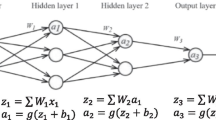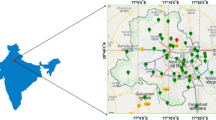Abstract
Time series prediction is a challenging predictive modeling case. It is essential to have a prediction model that can adapt to dynamic data. Air quality data show a significant changing degree of spatial and temporal data. Therefore, the updated deep learning model is suitable for this case. In this paper, monitoring and analysis of air quality with dynamic training using recurrent neural network (RNN) are proposed to provide the model remains up-to-date as new data comes. In the experiments, by adjusting the model, the accuracy is enhanced. The scheduling retrained model is provided based on the expected mean absolute percentage error (MAPE) value. First, the machine learning architecture environment is being prepared. Secondly, the RNN parameters were optimized for excellent level predictive precision. Third, set and test the scheduling and MAPE value based on the MAPE’s expected value for the automatic retraining model. Finally, on the interactive map, the output is presented using R and Shiny to visualize the RNN training results.





















Similar content being viewed by others
References
Aravinth MS, Shanmugapriyaa M, Sowmya M, Arun M (2015) An efficient HADOOP frameworks SQOOP and Ambari for big data processing. Int J Innov Res Sci Technol 1(10):252–255
Bai Y, Sun Z, Deng J, Li L, Long J, Li C (2017) Manufacturing quality prediction using intelligent learning approaches: a comparative study. Sustainability 10(1):85
Bivand RS, Pebesma EJ, Gómez-Rubio V, Pebesma EJ (2008) Applied spatial data analysis with R, vol 747248717. Springer, Berlin
Borthakur D et al. (2008) HDFS architecture guide. HADOOP Apache Project. http://hadoop.apache.org/docs/stable1/hdfs_design.html. Accesed on 15 May 2019
Brocklebank JC, Dickey DA, Choi B (2018) SAS for forecasting time series. SAS Institute, North Carolina
Chang F, Dean J, Ghemawat S, Hsieh WC, Wallach DA, Burrows M, Chandra T, Fikes A, Gruber RE (2008) Bigtable: a distributed storage system for structured data. ACM Trans Comput Syst (TOCS) 26(2):4
Connor JT, Martin RD, Atlas LE (1994) Recurrent neural networks and robust time series prediction. IEEE Trans Neural Netw 5(2):240–254
Dean J, Ghemawat S (2008) Mapreduce: simplified data processing on large clusters. Commun ACM 51(1):107–113
de Myttenaere A, Golden B, Grand BL, Rossi F (2016) Mean absolute percentage error for regression models. Neurocomputing 192:38–48. https://doi.org/10.1016/j.neucom.2015.12.114 Advances in artificial neural networks, machine learning and computational intelligence
do Nascimento Camelo H, Lucio PS, Junior JBVL, de Carvalho PCM, dos Santos DVG (2018) Innovative hybrid models for forecasting time series applied in wind generation based on the combination of time series models with artificial neural networks. Energy 151:347–357. https://doi.org/10.1016/j.energy.2018.03.077
Ghemawat S, Gobioff H, Leung ST (2003) The Google file system. ACM, New York
Kleine Deters J, Zalakeviciute R, Gonzalez M, Rybarczyk Y (2017) Modeling PM2.5 urban pollution using machine learning and selected meteorological parameters. J Electr Comput Eng 2017:14. https://doi.org/10.1155/2017/5106045
Kristiani E, Yang CT, Huang CY, Ko PC, Fathoni H (2020) On construction of sensors, edge, and cloud (ISEC) framework for smart system integration and applications. In: IEEE Internet of Things Journal
Ku JH (2018) A study on prediction model of equipment failure through analysis of big data based on RHADOOP. Wirel Pers Commun 98(4):3163–3176
Lee CF, Yang CT, Kristiani E, Tsan YT, Chan WC, Huang CY (2018) Recurrent neural networks for analysis and automated air pollution forecasting. In: International Conference on Frontier Computing, pp 50–59. Springer
Lee CH, Zheng YL (2015) Automatic SQL-to-NoSQL schema transformation over the MySQL and HBase databases. In: Consumer Electronics-Taiwan (ICCE-TW), 2015 IEEE International Conference on, pp 426–427. IEEE
Li X, Peng L, Hu Y, Shao J, Chi T (2016) Deep learning architecture for air quality predictions. Environ Sci Pollut Res 23(22):22408–22417
Liu L, Yang X, Liu H, Wang M, Welles S, Márquez S, Frank A, Haas CN (2016) spatial-temporal analysis of air pollution, climate change, and total mortality in 120 cities of China, 2012–2013. Front Public Health 4:143
Medsker LRR, Jain LC (2001) Recurrent neural networks. Des Appl vol 5
Rahman A, Srikumar V, Smith AD (2018) Predicting electricity consumption for commercial and residential buildings using deep recurrent neural networks. Appl Energy 212:372–385. https://doi.org/10.1016/j.apenergy.2017.12.051
Vapnik V, Izmailov R (2017) Knowledge transfer in SVM and neural networks. Anna Math Artif Intell 81(1–2):3–19
Xie Y, Zhao B, Zhang L, Luo R (2015) Spatiotemporal variations of PM2.5 and PM10 concentrations between 31 Chinese cities and their relationships with SO2, NO2, CO and O3. Particuology 20:141–149
Yang CT, Chen CJ, Tsan YT, Liu PY, Chan YW, Chan WC (2018) An implementation of real-time air quality and influenza-like illness data storage and processing platform. Comput Hum Behav. https://doi.org/10.1016/j.chb.2018.10.009
Yang CT, Chen ST, Den W, Wang YT, Kristiani E (2018) Implementation of an intelligent indoor environmental monitoring and management system in cloud. Future Gener Comput Syst. https://doi.org/10.1016/j.future.2018.02.041
Yang C, Chen Y, Chan Y et al (2020) Influenza-like illness prediction using a long short-term memory deep learning model with multiple open data sources. J Supercomput 76:9303–9329. https://doi.org/10.1007/s11227-020-03182-5
Zaytar MA, El Amrani C (2016) Sequence to sequence weather forecasting with long short term memory recurrent neural networks. Int J Comput Appl 143(11):7–11
Zhang W, Eftychiou A, Vrusias B, Antonopoulos N, Zhang D, Ma M, Oikonomou A, Bessis N, Norrington P, Yue Y, et al. (2014) International journal of grid and high performance computing. International Standard Serial Number
Acknowledgements
This work was funded by the Ministry of Science and Technology (MOST), Taiwan, under grant number MOST 106-3114-M-029-001-A, MOST 106-2621-M-029-001, MOST 109-2119-M-029-001-A and MOST 109-2221-E-029-020-. In addition, this work was also funded in part by the Taichung Veterans General Hospital (TCVGH), Taiwan, under grant number TCVGH-T1087804 and TCVGH-T1097801.
Author information
Authors and Affiliations
Corresponding author
Additional information
Publisher's Note
Springer Nature remains neutral with regard to jurisdictional claims in published maps and institutional affiliations.
Rights and permissions
About this article
Cite this article
Kristiani, E., Lee, CF., Yang, CT. et al. Air quality monitoring and analysis with dynamic training using deep learning. J Supercomput 77, 5586–5605 (2021). https://doi.org/10.1007/s11227-020-03492-8
Accepted:
Published:
Issue Date:
DOI: https://doi.org/10.1007/s11227-020-03492-8




